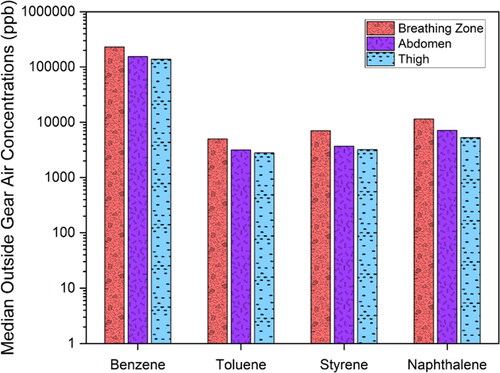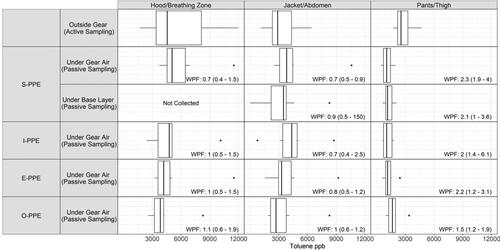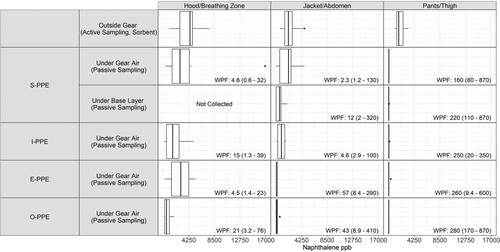Figures & data
Figure 1. PPE ensembles, with varying interface control measures, worn with cotton long-sleeve base layers: (A) standard (S-PPE) (B) interface control (I-PPE) (C) enhanced interface control (E-PPE), and (D) one-piece liner (O-PPE).

Table 1. PPE conditions are organized from the theoretically lowest level of interface control (S-PPE) to the highest (O-PPE).
Figure 2. Median air concentrations, collected using an active sampling technique, measured outside gear within the smoke exposure chamber at different sampling heights.

Figure 3. Outside and under gear and under base layer air concentrations of benzene, with median and range of WPFs. WPFs represent a comparison of active area air sampling outside the turnout gear to passive air sampling under the turnout gear.

Figure 4. Outside and under gear and under base layer air concentrations of toluene, with median and range of WPFs. WPFs represent a comparison of active area air sampling outside the turnout gear to passive air sampling under the turnout gear.

Supplemental Material
Download MS Word (146.9 KB)Data availability statement
The authors confirm that the data supporting the findings of this study are available within the article or its supplementary materials.


